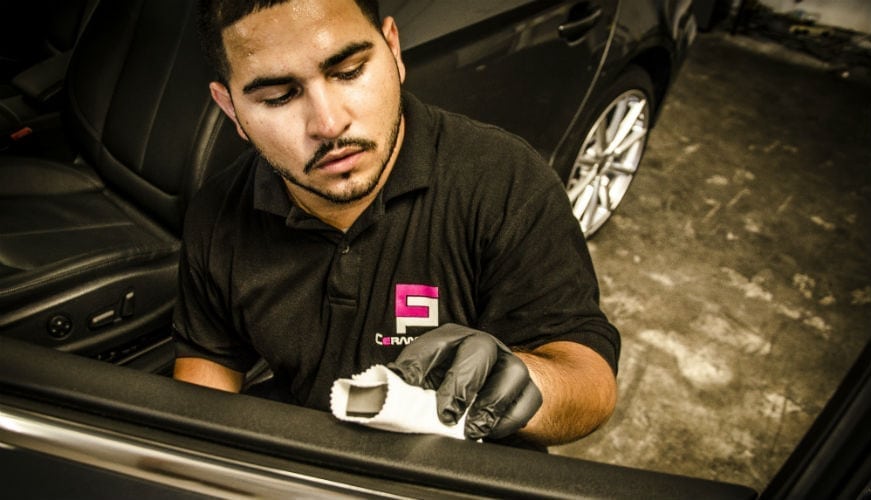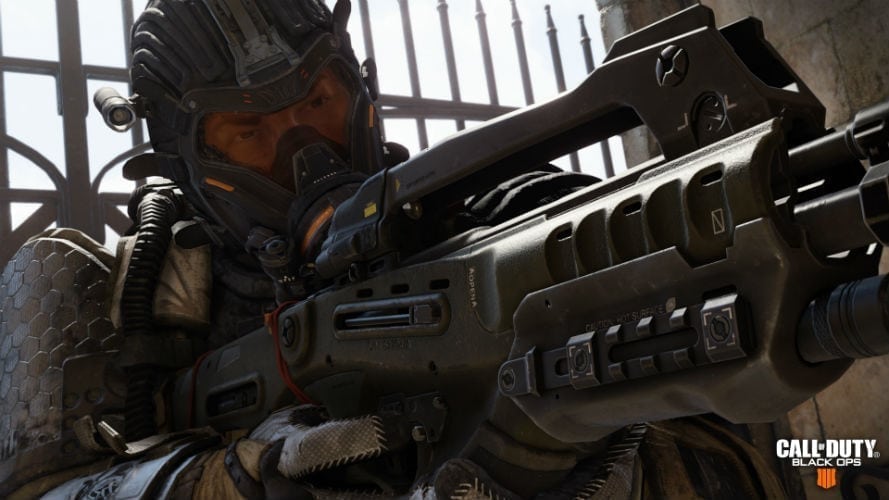
Usually, when you read about nanotechnology or see it depicted in Hollywood movies, it involves tiny machines or micro-robots doing incredible things. But the first piece of nanotechnology that actually breaks through to mainstream use will likely operate differently. Instead, it will be an amazing consumer product that, after application, makes your car look like it just rolled off the lot, freshly painted and waxed, for as long as you own it.
In just a few years, “Nano Ceramic Coatings” have quickly grown in popularity to become one of the top-selling vehicle paint protection products in America, even if the vast majority of the nation has no idea what it is. The advanced nanotechnology is gaining fast on wax, and by 2020 may make car waxing obsolete.
A nano-ceramic coating is a liquid polymer, applied by hand to the exterior of a vehicle. The coating bonds with the vehicle’s factory paint, creating a layer of protection that will not wash away or break down. It won’t wear through the years and can only be removed through abrasion. Additionally, it does not require repeated applications on a monthly basis.
Trending
E3 2021: Highlights and News From Day 3, Day 4 Schedule
“Ceramic coatings are so far superior to wax that comparing the two isn’t even relevant,” says Peter Diebitsch, founder and CEO of Ceramic Pro, the largest ceramic coating distributor in the U.S. “A ceramic coating creates a super-slick, mirror-like finish that nothing sticks to, while the UV protection prevents paint from fading as it reduces visible aging of the vehicle in general.”
All products in the space offer everything from six months to a lifetime of durability, depending on the type of install and formula. Still, until very recently, a ceramic coating treatment would definitely be considered an investment: a full professional ceramic coating of a vehicle costs a car owner roughly $1,000.00 and is guaranteed to last the vehicle’s lifetime.
In the last year, new lower-cost “do it yourself ” nano-ceramic coating products have entered the marketplace and may end up providing a mainstream breakthrough. One low-cost competitor to Ceramic Pro is a DIY nanoceramic coating product called “HydroSilex,” which doesn’t need a professional to apply, can be done at your own home, and only takes ten minutes to complete. It needs reapplication every six months and doesn’t come with the warranty you’d receive had you invested in the Ceramic Pro treatment.
However, HydroSilex does introduce drivers to nano-ceramic coating at a very accessible price point. The best scenario for a car owner might be testing the waters with HydroSilex and seeing the results for themselves. If they’re impressed, then they can step up to a permanent coating treatment by a professional for a long-term solution.
By Jack Tisch
By I&T Today
Innovation & Tech Today features a wide variety of writers on tech, science, business, sustainability, and culture. Have an idea? Send it to submit@innotechtoday.com
All Posts

When it was first announced in February 2018 that the next installation of the Call of Duty franchise was a new version of Black Ops, I’ll admit that I was a little on the skeptical side. After the previous installment with Black Ops III, I was horribly disappointed with a campaign that was too overwhelming and uninteresting and an online multiplayer that was so gimmicky that I immediately went deeper into the Call of Duty catalog to regain my love for the franchise.
Trending
E3 2021: Highlights and News From Day 3, Day 4 Schedule
After the lengthy wait to the front of the line, we finally got on stage and got our custom classes ready. The format was a best of five, with various game modes: Domination, Team Deathmatch, and Hard-Point. I personally went with a new version of the classic ARC rifle with Reflex sight, Fore-Grip, and Extended Mag, allowing for great versatility for both short and long range.
Starting off, you had to choose your character, each having their own special abilities ranging from a grapple gun to mobile barriers to grenade launchers. The maps allowed for interesting play individually and as a team with tunnels, trenches, and strategically-placed windows. When it comes to the mechanics, they have improved drastically. The bullet drop and the penetration through walls is realistic (I feel slightly bad for the guy that I blasted through the wall, it probably took around 12 bullets without the FMJ attachment, but it was his own fault).
The great thing with the gimmicks in this game is that they do not take over the experience, instead adding to it. They are inventive and, if not used in the right way, will get you killed. Just as I was getting into the groove, time was up. Our team had won 3 games to 1 and the next thing on my to-do list was to pre-order the new Black Ops 4 game. After my disappointment with the previous installment, the futuristic warfare that was on display will keep me entertained until the next entry and beyond.
By Steven Higgins






































